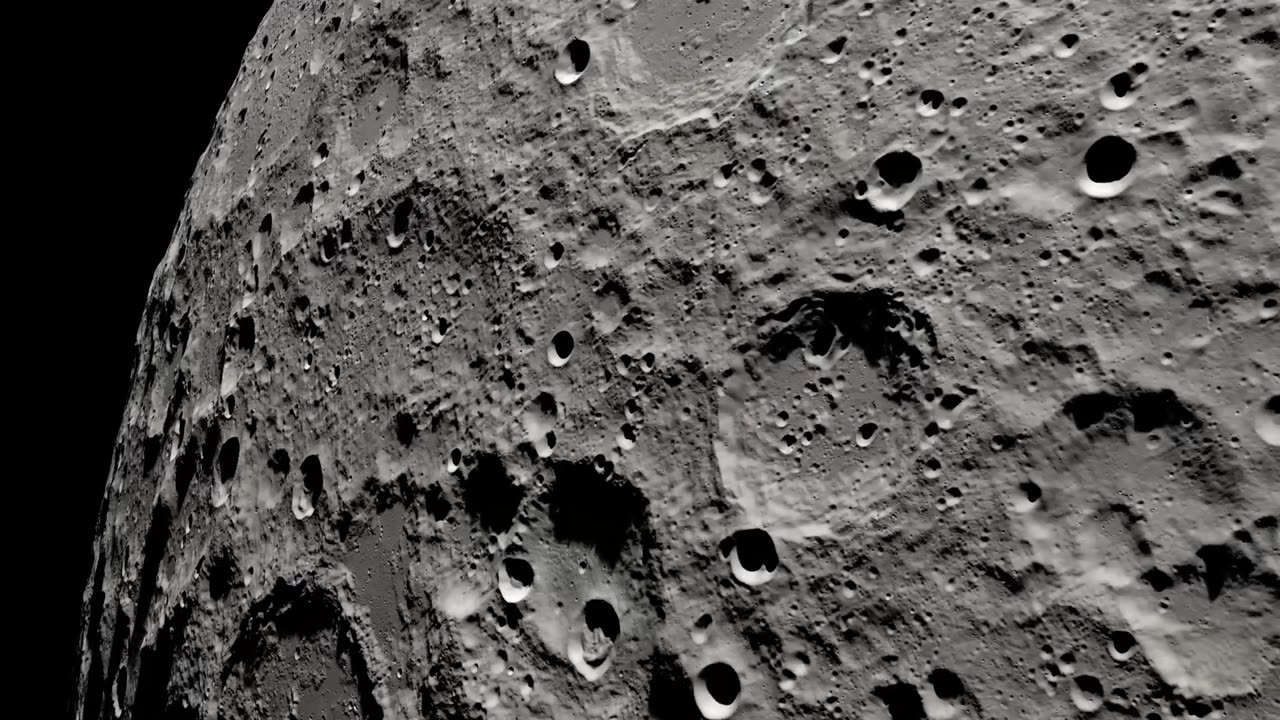Premium Only Content

Apollo 13: Unforgettable Glimpses of the Moon"
Apollo 13, a critical and dramatic mission in the Apollo program, offered unique and breathtaking views of the Moon from the vantage point of its spacecraft. Launched on April 11, 1970, with the goal of landing astronauts on the lunar surface, Apollo 13 encountered a life-threatening crisis when an oxygen tank exploded, forcing the crew to abort their lunar landing plans and focus on a safe return to Earth.
Despite not achieving its original objective, Apollo 13 still provided captivating views of the Moon during its journey. As the spacecraft looped around the Moon, the crew members—command module pilot John Swigert, lunar module pilot Fred Haise, and mission commander James Lovell—witnessed the lunar landscape from a distance, capturing their observations both in words and through the spacecraft's windows.
Here's a description of some of the views they might have experienced:
Surface Features: The astronauts would have seen a variety of craters, mountain ranges, and valleys on the lunar surface. The stark contrast between the bright lunar highlands and the darker maria (large, flat plains) would have been evident.
Moon's Horizon: The Moon lacks an atmosphere, so its horizon appears sharper and clearer than that of Earth. The astronauts would have noticed a more defined line between the lunar surface and the blackness of space.
Sunrises and Sunsets: The changing angle of sunlight would have created stunning visual effects as shadows lengthened and shortened across the Moon's surface. The play of light and shadow would have revealed the rugged terrain in intricate detail.
Crater Detail: Observing the intricate details of lunar craters—ranging from small, bowl-shaped depressions to larger, complex structures—would have been an awe-inspiring experience for the astronauts.
Earthrise and Earthset: While Apollo 13 didn't have the opportunity to capture the iconic "Earthrise" photo like Apollo 8 and Apollo 11, the astronauts could still have witnessed the Earth rising above the lunar horizon, providing a unique perspective of our home planet against the backdrop of space.
Starfield: The absence of atmospheric interference would have allowed the crew to see stars and constellations with exceptional clarity, offering a view of the cosmos that's difficult to replicate from Earth.
Silent Serenity: Beyond the visual aspects, the serenity and stillness of space would have been palpable as the spacecraft floated in lunar orbit. The quiet isolation of the Moon's surroundings would have created a profound sense of awe and reflection.
Apollo 13's unplanned flyby of the Moon, though fraught with challenges, offered a glimpse of the lunar surface and the celestial beauty of space. The crew's observations, experiences, and photographs contributed not only to our understanding of the Moon but also to our appreciation of the vastness and wonder of the universe.
-
 1:07:40
1:07:40
Glenn Greenwald
4 hours agoTucker Carlson on Charlie Kirk Assassination Fallout, Free Speech, Foreign Policy, and the Reaction to his Kirk Remarks | SYSTEM UPDATE #520
135K97 -
 14:22
14:22
Robbi On The Record
2 days ago $0.20 earnedGen Z’s Narcissism Obsession: Why Everyone’s a “Psychologist”
5.38K8 -
 LIVE
LIVE
GritsGG
5 hours agoQuad Win Streaks!🫡 Most Wins in WORLD! 3600+
156 watching -

Sarah Westall
2 hours agoCan the World Be This Strange? The Nature of Our Reality w/ Darius J Wright
7K -
 LIVE
LIVE
megimu32
2 hours agoOn The Subject: Friends | 31 Years of the Sitcom That Defined a Generation
136 watching -
 30:00
30:00
BEK TV
1 day agoCounter Culture Mom
1.55K -
 1:24:54
1:24:54
Kim Iversen
5 hours agoTylenol vs Vaccines: Which One Is The REAL Cause Of Autism? The Truth Will Upset You
49.9K55 -
 LIVE
LIVE
GloryJean
3 hours ago2v2 Tuesday 🔥 Night Games w/ The Boys 🖱️ 6.7 K/D
16 watching -
 LIVE
LIVE
XxXAztecwarrior
5 hours agoNew Season/ War Ablaze
20 watching -
 LIVE
LIVE
Armadillofather
2 hours agoTime for some Borderlands Chaos! | Thank you for being here!
7 watching